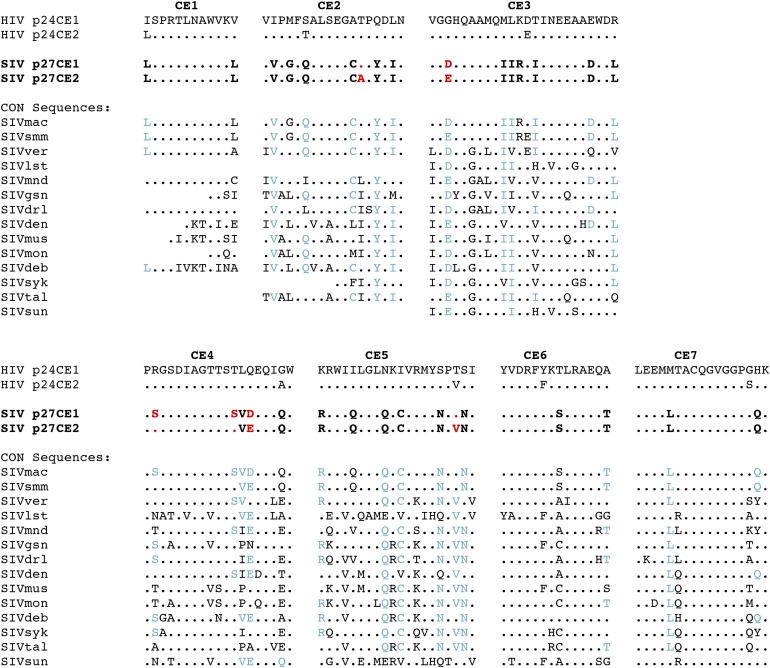FIGURE 1.
Derivation of SIV p27Gag CE and conservation relative to HIV-1 and SIV strains from multiple species. All sequences were compared with HIV-1 p24CE1 (20), with a dot indicating homology. Toggle positions that distinguish SIV p27CE1 and p27CE2 are shown in red type. Amino acid differences that distinguished the SIV and HIV-1 CE but were conserved in other SIV strains are shown in blue type. A protocol of including only one toggle site per CE was adhered to except for CE4, in which two additional amino acids were substituted because those amino acid variants were always found together in the database. No toggled amino acid was included for CE1, CE6 or CE7 due to the complete conservation observed in those segments among available SIV sequences. The sequences shown correspond to the consensus of those obtained from the Los Alamos HIV sequence database. Blank positions indicate that sequences corresponding to the CE region were not available. SIVmac (species of origin: macaque), n = 495; SIVsmm (sooty mangabey), n = 272; SIVver (vervet), n = 3; SIVlst (l’Hoest’s), n = 4; SIVmnd (mandrill), n = 3; SIVgsn (greater spot-nosed), n = 2, one of two sequences matched HIV p24CE1 at position 9 of CE2 and position 1 of CE3; SIVdrl (drill), n = 2, one of two sequences matched HIV p24CE1 at position 11 of CE4; SIVden (Dent’s Mona); n = 1; SIVmus (mustached), n = 1; SIVmon (mona) n = 1; SIVdeb (De Brazza’s), n = 2; SIVsyk (Sykes), n = 1; SIVtal (talapoin), n = 2, one of two sequences matched HIV p24CE1 at position 20 of CE3 and at position 6 of CE5; SIVsun (sun-tailed), n = 1.

